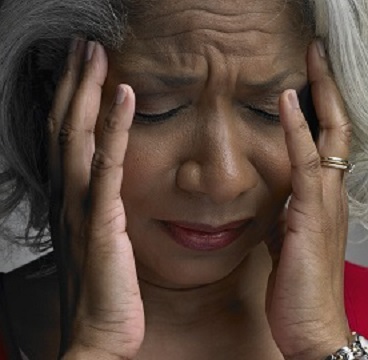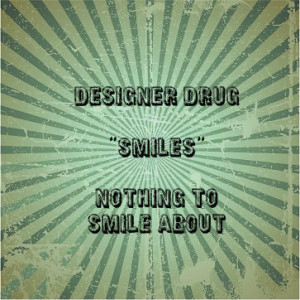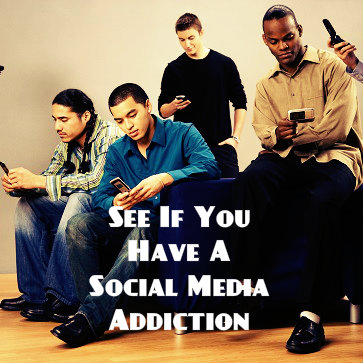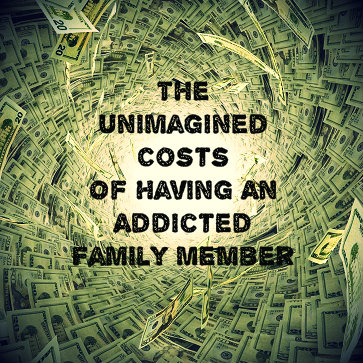Seniors make up 13 percent of the population of the United States, yet they account for more than one-third of the prescription medications. One-half of all seniors were taking at least three prescription medications as of the year 2000, up from one-third in 1988.
With so many seniors taking prescription drugs, it shouldn’t be surprising that they are a part of the rising problem of prescription drug abuse. Nevertheless, senior drug abuse remains a largely hidden problem, in large part because elderly people do not fit the common profile of someone dealing with drug abuse or addiction.
In the coming decades, this problem can only be expected to grow. Seniors are one of the fastest growing segments of the population, as the first wave of the baby boom generation has reached senior citizen status. By 2030, seniors are expected to make up one-third of the country’s population.
What Are The Hidden Symptoms Of Senior Addiction?
 Identifying the signs and symptoms of drug problems in seniors presents various challenges. One of the biggest difficulties is the fact that a number of these signs and symptoms can mirror normal signs of aging.
Identifying the signs and symptoms of drug problems in seniors presents various challenges. One of the biggest difficulties is the fact that a number of these signs and symptoms can mirror normal signs of aging.
Among the symptoms of drug use that may be mistaken for signs of aging are disorientation, poor balance, memory loss, chronic boredom, depression, shaky hands, poor balance and mood swings. Since seniors do not fit the stereotypical profile of someone with drug problems, recognizing when such symptoms spring from drug use and not just aging is a challenge for loved ones and health professionals alike.
Drug Abuse Vs. Misuse – Is There A Difference?
When examining drug problems among seniors, it is helpful to make the distinction between drug abuse and drug misuse. Drug misuse refers to the use of prescription medications in a way that does not comply with the prescription instructions. Drug misuse can be entirely unintentional, and the result of unclear instructions or confusion. Drug misuse can also be intentional; for example, patients may take more than the prescribed dose without consulting their doctor if they feel that the prescribed dose is not having an effect. In general, the term misuse is used to refer to the incorrect use of legitimately prescribed drugs, with the intent of treating an established medical problem.
In contrast, drug abuse refers to people who use drugs for recreational purposes. They may abuse illegal drugs that have no therapeutic purpose, or they may use therapeutic drugs incorrectly in order to achieve a euphoric high or some other pleasurable feeling.
Both drug misuse and drug abuse can result in drug dependence and other negative side effects. However, drug misuse is usually the easier problem to solve. The most common reason for drug misuse is an ineffective treatment plan, and the problem will usually disappear if treatment is revisited and a more effective plan put in place.
Drug abuse among seniors is much less common than drug misuse. Nevertheless, the problem does exist for 12 to 15 percent of elderly people who seek medical help.
What Are The Commonly Abused Drugs Among The Elderly
Opioid drugs, depressants, stimulants, benzodiazepines and over-the-counter (OTC) medications are the drugs most frequently abused among seniors. Opioids are typically prescribed for pain relief; depressants are prescribed for anxiety and sleep disorders; stimulants are prescribed for narcolepsy and ADHD; and benzodiazepines for anxiety and insomnia.
Opioids are particularly dangerous drugs to abuse or misuse because they are extremely addictive. These medications are chemically similar to the illegal drug heroin, and can be just as addictive as heroin when used incorrectly.
After prescription drugs, alcohol is the most commonly abused substance among the older adult population. OTC medications can react poorly with alcohol, leading to negative consequences that would not otherwise be present with these medications. They can also react badly with prescription drugs.
Find Out The Strategies To Address Senior Drug Problems
Tailoring education, consumer information and screening efforts to older adults are some key steps to reducing drug abuse among the elderly.
Although seniors are the most significant consumers of prescription drugs, promotional and educational materials are often not geared toward them. Helpful tools might include educational materials available in large print and drug diaries to help track medications.
Educational efforts aimed at reducing drug abuse should also keep seniors in mind. Teenagers aren’t the only segment of the population that needs education about drug and alcohol abuse. The more society recognizes that seniors are an at-risk population, the more education and screening efforts may be available in retirement communities, senior centers, city parks and recreation departments, and other places where the elderly can benefit.
Read More About Why Drug Use Is Surging In Baby Boomers
06 Mar 2014
What Is The Deadly New Designer Drug: “Smiles”?
Smiles is the street name for 2C-I, a potent synthetic hallucinogen that has psychedelic-like effects when ingested. Smiles belongs to the 2C family of compounds which includes another popular synthetic, 2C-B. This class of drugs is closely related to amphetamines, including methamphetamine. Smiles is often sold as a fine white powder or tablet, and is also mixed into candies. It can be snorted, smoked or eaten.
History And Distribution Of 2C-I
2C-I was first synthesized in the 1990s by chemist Alexander Shulgin, who is well known for synthesizing many other popular drugs. Smiles appeared as early as the early 2000’s in the Netherlands as a then-legal alternative to 2C-B, which had just been banned. Smiles was banned shortly after, in 2008, along with other 2C drugs.
The U.S. classified 2C-I as a Schedule I substance (meaning “no accepted medical value” and “high potential for abuse”) in 2012, making it illegal to make, distribute or possess.
The Dangerous Effects Of 2C-I
 Some compare 2C-I’s effects to a very potent dose of LSD (acid) or MDMA (Molly) because of hallucinations and a feeling of euphoria. This drug, however, appears to be much more dangerous. Side effects include the following:
Some compare 2C-I’s effects to a very potent dose of LSD (acid) or MDMA (Molly) because of hallucinations and a feeling of euphoria. This drug, however, appears to be much more dangerous. Side effects include the following:
- Nausea and vomiting
- Muscle spasms
- Paranoia
- Seizures
- Raised blood pressure
- Kidney failure
What Are The Dangers Of 2C-I?
Unlike the more common hallucinogens, such as LSD and psilocybin (magic mushrooms), which typically do not cause overdoses, 2C-I may cause severe bodily harm, even at small doses. The white powder form of 2C-I is impossible to tell apart from other substances, and it can easily pass off as LSD when mixed into candy or blotting paper, putting casual LSD users at risk of experiencing 2C-I’s more severe side effects, or worse, an overdose. In addition, 2C-I can be difficult to detect by emergency room doctors, with many toxicology tests coming back negative. This could be due, in part, to smiles being laced with other compounds. Like heroin and other synthetics, smiles is notoriously impure. There is currently no established lethal dose of 2C-I, but the drug has been implicated in a number of deaths, both in the U.S. and Europe.
“Smiles” Overdose Tragedies
According to local news reports, in the summer of 2012, 17-year-old Elijah Stai of Park Rapids, Minn., ingested a fatal dose of smiles in a candy bar given to him by a friend. Only an hour later, while hanging out at the local McDonald’s, Stai’s smiles trip took a turn for the worse. His distraught friends and other eyewitnesses describe him acting “possessed”: hyperventilating, making strange sounds and repeatedly hitting his head against the floor. His worried friends took him back home in an attempt to let him calm down and “ride out” the high, but the day ended in tragedy. Less than two hours later, Stai stopped breathing. His story was sadly mirrored by another death in a nearby city just the day before when police found the body of a teen on a sidewalk; he had also suffered a fatal smiles overdose. Police blamed both incidents on a “bad batch” of 2C-I that was circulating on the streets at the time.
The story of the teens serves as a somber reminder of how dangerous synthetic drugs can be. Even if most 2C-I “trips” end without any tragic consequences, there’s no telling how safe the next dose will be, or if it’s even pure 2C-I. Experts are urging extreme caution around these drugs and warn that teens are especially likely to experiment with them.
Read More About The Dangers Of Designer Drugs
A dual diagnosis means that you have a substance abuse problem, or an addiction, and you also have been diagnosed as having a mental illness. The co-occurrence of addiction and mental illness is not uncommon. If you receive a dual diagnosis, rest assured that you are not alone, but also know that you need to be treated for both issues. There are plenty of rehab facilities and caring, trained professionals who can help you work through both and help guide you through recovery.
How Many People Receive A Dual Diagnosis?
 A dual diagnosis is a fairly common occurrence. According to statistics from the National Alliance on Mental Illness, around half of all people with a severe mental illness also struggle with substance abuse. On the flipside, over one-third of people who abuse alcohol, and more than half of people who abuse drugs, are affected by mental illness. Some of the more common mental illnesses that are diagnosed with substance abuse include depression, anxiety disorder, schizophrenia, and bipolar disorder.
A dual diagnosis is a fairly common occurrence. According to statistics from the National Alliance on Mental Illness, around half of all people with a severe mental illness also struggle with substance abuse. On the flipside, over one-third of people who abuse alcohol, and more than half of people who abuse drugs, are affected by mental illness. Some of the more common mental illnesses that are diagnosed with substance abuse include depression, anxiety disorder, schizophrenia, and bipolar disorder.
Why Do Substance Abuse And Mental Illness Co-Occur?
There are several possible reasons it is so common to have both a mental illness and an addiction. The relationship is complicated and can be caused by different factors depending on the individual. If you have a mental illness, especially if you are not seeking treatment for it, you may find that you turn to drugs or alcohol as a way of self-medicating. By getting high, you may be able to momentarily push away the pain and bad feelings associated with your mental illness.
Another factor in dual diagnosis is the possibility that substance abuse triggers or worsens a mental illness. Some people use drugs or alcohol and then begin to experience the onset of mental illness symptoms for the first time. If you have an undiagnosed mental illness, like depression, and abuse drugs, you can make it worse.
Why Is It Important To Treat Both Mental Illness And Addiction?
If you receive a dual diagnosis, you must treat both conditions in order to have a chance at being well. If you get into recovery for your addiction, but ignore your mental illness, you are likely to go back to using. On the other hand, if you get help for your mental illness and fail to address your substance abuse problem, you can expect to experience relapsing symptoms of your disorder.
How Are Mental Illness And Addiction Treated Together?
Experts agree that an integrated approach to treatment is the best option for a dual diagnosis. This means that mental health professionals and addiction specialists work together with you in the same place. For instance, you might enter into a rehab facility that specializes in diagnosing and treating mental disorders along with substance abuse problems. By targeting both issues, at the same time and in the same place, you will have the best odds of success. The two problems are intertwined and to get at one, you must address the other.
Effective integrated treatment for a dual diagnosis includes several components. Care is given in stages, beginning with developing a relationship with your caregivers. Interventions that motivate you to stop using are important. Counseling for both mental illness and substance abuse should be included. Finally, having social support, whether that means working with peers or with family, is essential for good care.
If you have been surprised with a dual diagnosis, take time to learn about your options. Make sure that you get help from professionals who understand your particular needs and who will approach your care by addressing both of your issues.
See How Mental Illness And Substance Abuse Are Leading Causes of Non-Fatal Disease
28 Jan 2014
Will I Always Be In Recovery?
Recovery is an important word for addicts. The word implies a process. When you are in recovery, you are working toward a goal. That goal is to never use again, to remain sober, to avoid relapsing. A process also implies that there is an end point, that at some time you will be fully recovered. Is that really possible or is recovery a lifelong state of being?
Is Addiction Really A Disease?
 Thanks to years of research, we are finally beginning to better understand drugs, how they affect the user, how they change the brain, and what addiction really is. It turns out that addiction is a disease of the brain, and a chronic one. Like any other chronic disease (asthma, diabetes, heart disease, arthritis), addiction will keep returning if left untreated.
Thanks to years of research, we are finally beginning to better understand drugs, how they affect the user, how they change the brain, and what addiction really is. It turns out that addiction is a disease of the brain, and a chronic one. Like any other chronic disease (asthma, diabetes, heart disease, arthritis), addiction will keep returning if left untreated.
Some people still cling to the idea of addiction as a matter of willpower only, but the truth is that drugs change your brain. This means that giving up drugs becomes a difficult process requiring professional treatment. While people being treated for diseases like arthritis and high blood pressure are in recovery, so too are addicts going through the treatment process. If someone with high blood pressure stops taking his pills, his symptoms will return. If a drug addict stops seeking treatment, odds are he will start using again.
Is It Possible To Be Recovered From Addiction?
Research shows that drugs change your brain, both chemically and physically. The more you use and the longer the duration of use, the more changes will occur. Research also shows that these changes can improve with abstinence from drugs, but that they may never fully reverse. Addiction forever changes you, which means that being completely recovered may never be possible.
It may sound hopeless, but take strength in knowing that the longer you stay sober, the easier it becomes to resist the urge to relapse. Although your brain may not completely recover from drug use, it comes very close. Studies show, for instance, that when a meth user abstains for just 14 months, her brain returns to a near normal state. From that point on, avoiding relapse becomes monumentally easier.
How You Can Help Yourself And Others In Ongoing Recovery
It may seem like being recovered is a goal for which all addicts should strive. If you are recovered, all your problems are over, right? For the addict, the word recovered is a dangerous one. If you believe you are recovered, you might believe that you are not vulnerable to relapse. A recovering addict always carries that possibility. Even an addict who has been sober for decades could relapse and hit rock bottom again.
Being forever in recovery may seem daunting, but it protects you from becoming too relaxed about your addiction. It also gives you a reason to be continually improving yourself and your life. Always striving toward being a better and healthier person is a great way to live. Most people become stagnant in their lives. You, however, have the opportunity to be always bettering yourself.
Use your recovery as a tool and a process for becoming a better person. As you resist the urge to relapse, improve your life in other ways as well. Use activities like volunteer work, your career or spending time with loved ones as ways to be a good person, and to be successful in recovery. Turn to exercise, healthy eating or spirituality to make your life better and to stay clean. You may never fully recover, but you will always be in the process of living your life to its greatest potential.
Read More About Starting Your Life Over In Recovery
23 Jan 2014
What Is Kratom And What Are Its Health Risks?
Kratom is the common name for an herbal drug obtained from a tree species called Mitragnya speciosa. This drug has a history of use in Southeast Asia and current evidence indicates that its use is currently on the rise in the U.S., where consumers can make legal purchases over the Internet. Kratom apparently has the potential to
Read More
Addiction is a tricky illness, especially when it comes to behavioral addictions. Chemical addictions are straightforward. A substance—alcohol or drugs—makes chemical changes to your brain and makes it difficult for you to stop using. Clear signs of dependence emerge, such as withdrawal symptoms and tolerance. But, where do you draw the line when it feels like you might be obsessively engaging in an activity? Are you addicted? And if so, how do you stop?
What Is Social Media Addiction?
 Being addicted to social media is not a condition recognized officially by the medical and addiction communities. However, there is a whole class of recognized addictive disorders called behavioral or process addictions. These refer to the compulsive and obsessive need to engage in a particular activity or behavior. It could be gambling, having sex, shopping, eating or even using social media.
Being addicted to social media is not a condition recognized officially by the medical and addiction communities. However, there is a whole class of recognized addictive disorders called behavioral or process addictions. These refer to the compulsive and obsessive need to engage in a particular activity or behavior. It could be gambling, having sex, shopping, eating or even using social media.
In our hyper-connected world in which we are all glued to devices, becoming obsessive about using them is not unusual. Social media sites like Facebook, Twitter, and Instagram allow us to keep in touch with other people, but when you keep turning to them with a burning compulsion, you may be developing a problem.
How Can I Tell If I Have A Problem With Social Media?
The line between responsible, normal use of social media and addictive use can be tricky to distinguish. It is especially difficult to see that line in your own use; it is easier to see it in others. For this reason, one sure sign that you need to rethink your usage is if someone points out your obsession. If a concerned loved one tells you that you may be turning to Facebook too often, you should listen and resist the urge to become defensive.
Another clear sign of a behavioral addiction is if you engage in the activity to feel better. If you get an emotional high or a feeling of stress relief from using social media, you are becoming dependent on it. Another sign is the experience of withdrawal. Withdrawal symptoms in chemical addictions are clear-cut and to be expected, but you can also experience them with behavioral addictions. Take notice if you feel anxious, depressed, or antsy when you can’t get to your phone or tablet to update your status.
If you find that your compulsive attachment to social media interferes with other aspects of your life, you need to reevaluate your usage. Maybe you are getting in trouble at work because you can’t stay off your favorite sites and you don’t get your work done. Maybe your relationships within your family are deteriorating because you spend too much time online. These are signs that you have a problem. Finally, if you recognize that you are online too often, try to cut back and find that you can’t, you may be addicted.
How Can I Get Help For Social Media Addiction?
As with any addiction, professional help and support of loved ones are the keys to recovery. As more people face the problem of overusing technology, more professionals are available to help you cope and come clean. Find a therapist or counselor who has experience working with people who have behavioral addictions. Also consider finding a support group that can help you deal with your problem by relating to others in the same situation. Enlist the support of your loved ones to help you get through this, and you will be successful.
Read More About Why Internet Addicts Are More Likely To Abuse Drugs And Alcohol
What words can describe how a parent feels watching their child attempt to cover life’s pain with substances? When a child has a full-blown addiction, there can be significant financial costs on top of the emotional ones. One book which attempts to relate the family pain of substance abuse also talks about the strain placed on the family budget when addiction takes over.
An Addict’s Desperate And Drastic Steps
David Sheff’s Beautiful Boy recounts his son’s downward spiral with tales of missing credit cards, missing household items, missing checks and even missing coins from a sibling’s piggy bank. Addicts need their substance and they will do nearly anything to stay supplied. In this case, when the child left home and contacted mom and dad asking for more money, the desperate parents sent it.
If the addicted family member is a spouse, the financial dangers can become even greater. Joint bank accounts need to be watched carefully. The person may try to open a new line of credit in order to lay their hands on ready cash. In some cases, addicts have been known to frequent payday advance lending businesses.
What The Family Of An Addict Can Change
When this is the situation, the sober partner may need to take some more drastic steps. Names may need to be changed on bank accounts to protect savings. In extreme cases it may be necessary to establish a trust to safeguard the home and other major assets. The addiction can cost families inordinate amounts of capital, even when someone is maintaining vigilance. The drain can be devastating when fear is the only decision-maker.
When the child or spouse is at last ready to make a change, the costs for rehabilitation are not miniscule. As Sheff points out, money needs to be intentionally protected and then well-directed. Simply handing out money to a child not at home and on drugs isn’t always the best decision. However, investing in recovery is worth every penny.
Parents and spouses will need to make some very tough decisions about where to draw the financial line because addiction is costly. Often it will be helpful to talk with a mental health professional when making those kinds of decisions. They can offer dispassionate insight into whether it’s time for tough love or something else. When you’re in the middle of the situation, the overwhelming emotions can make it hard to reason wisely.
Finding Guidance When Dealing With The Addiction Of A Loved One
A biographical account cannot fully express what a family goes through when a member becomes addicted to alcohol or drugs, but it can lay out some of the potential landmines. Parents of children with addiction can learn from the mistakes of others. Get help when deciding how to support your loved one dependent on substances. There is a right time to close the billfold and a right time to open it again.
Read More To Find Out If You’re Enabling The Addict In Your Life And Break Free From The Cycle Of Broken Promises!
Self-reporting of drug use is an approach that uses interviews, questionnaires or surveys to determine whether a person uses drugs, has previously used drugs or currently has drugs in his or her system. This method differs from objective urine testing, a universally accepted approach that relies on chemical measurements to detect the presence of drugs. In a study published in October 2013 in the journal Addictive Behaviors, a team of researchers from several U.S. institutions compared the accuracy of self-reported drug use by teenagers and young adults in drug treatment to the accuracy of urine testing. The researchers found that individuals in these age groups tend to self-report their level of drug use with relatively consistent truthfulness.
Self-Reporting Drug Use
Drug treatment professionals and researchers use self-reporting to gather a range of statistics from small and large populations of drug users. Examples of the information commonly acquired include the absence or presence of drug use, frequency of drug use, larger patterns of drug use and the presence of underlying factors that may contribute to drug use frequency or drug use patterns in some way. Depending on the scope of an interview, survey or questionnaire, self-reporting may provide data on short-term drug usage, annual drug usage or lifetime drug usage. Some professionals and researchers use self-reporting to answer relatively simple questions about drug usage, while others use the technique in connection with complex formulas designed to gather very specific, detailed information from participants.
Urine Drug Testing
Urine drug testing is a specific form of urinalysis designed to detect the presence of commonly abused substances such as opioid narcotics, marijuana and other forms of cannabis, cocaine, amphetamine, methamphetamine and phencyclidine (PCP). In some cases, urine testing directly detects the presence of these substances; in other cases, it detects the breakdown products that these substances form after entering the bloodstream. A urine drug test only tells the person conducting the test whether an individual has used a particular substance within a narrow time span of roughly one to three days. It does not provide information about such factors as the method of drug use, the specific moment of drug use or the amount of drugs taken at a given time. Testers typically confirm the results of a urine drug test with a follow-up testing procedure designed to guarantee the final accuracy of the rendered results.
Accuracy Of Self-Reporting On Drug Use
Because urine drug testing provides an objective measurement of drug use, experts in the field commonly view this form of testing as the standard tool for detecting the presence of drugs in a person’s system. However, in certain situations, it is not necessarily convenient or practical to perform urine testing. In addition, the proper interpretation of testing results is sometimes relatively complex and time-consuming. For these reasons, doctors and other professionals sometimes have a real need for other ways of obtaining the information they require.
In the study published in Addictive Behaviors, researchers from three U.S. universities sought to determine if self-reporting of drug use can act as a reliable substitute for urine drug testing. They explored this question with the help of 152 teenagers and young adults enrolled in programs primarily geared toward the treatment of addictions to opioid narcotic drugs. Some of the participants received short-term (two-week) treatment with group/individual counseling and a standard combination of two opioid addiction medications called buprenorphine and naloxone. Others received longer-term (12-week) treatment with counseling and the combination of buprenorphine and naloxone. Self-reports and urine testing results were obtained from each group at regular intervals. Each participant received a small financial reward as an incentive to keep participating in the study.
After completing the study’s main phase, the researchers concluded that the teens and young adult participants provided self-reported information on drug use that generally matched up well with the objective measurements provided by urine drug testing. Generally speaking, these findings were unaffected by factors such as the amount of money received for participation and the specific nature of each individual’s drug addiction. However, the study’s authors also concluded that teens and young adults who received longer-term counseling and medication treatment had a greater tendency to under-report their drug use than teens and young adults who received shorter forms of treatment. Specifically, these individuals downplayed their involvement in both opioid and cocaine use.
So Is Self-Reporting Accurate Enough For Solo Drug Testing Use?
The authors of the study published in Addictive Behaviors believe that their findings demonstrate that teens and young adults in treatment commonly self-report their drug use accurately enough to give doctors a potential secondary alternative to urine drug testing. However, they also believe that the level of accuracy is not high enough to do away with the need for urine testing, especially in teens and young adults participating in relatively long-term treatment programs. And Save Your Life Or The Life Of A Loved One
Get Drug Rehab Counseling Help Now And Save Your Life Or The Life Of A Loved One!



